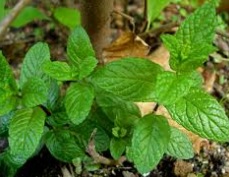Peppermint is an herb that belongs to the labiate family group since its corolla is divided into two lips or segments. These plants are phanerogamous (their reproductive organs are visible and take the shape of a flower), angiosperms (their carpels form an ovary that houses the ovules) and dicotyledons (their embryo generates two cotyledons or leaves).
 Also called mint or mint , peppermint has stems about fifty centimeters long with elliptical leaves, reddish flowers and dried fruits. Thanks to its aroma and flavor, it is used in cooking as a condiment.
Also called mint or mint , peppermint has stems about fifty centimeters long with elliptical leaves, reddish flowers and dried fruits. Thanks to its aroma and flavor, it is used in cooking as a condiment.
It is important to keep in mind that several species are called peppermint. Mentha spicata is generally called common peppermint and is used for medicinal and gastronomic purposes.
Analgesic, antiseptic, anti-inflammatory and antispasmodic properties are attributed to this mint. It is usually supplied through an infusion made with its leaves. In gastronomy, this aromatic herb is used to make ice cream, candies and pastry products, prepare cocktails or season meats and salads.
Mentha suaveolens is also called peppermint or mastranzo . In a similar way to what happens with Mentha spicata, infusions are prepared with this variety that are recommended for their antiseptic, digestive and analgesic properties. However, it is important to keep in mind that, in high doses, this peppermint is toxic .
Specifically, if it is recommended to include peppermint in anyone's diet, it is because it has such important health-promoting properties as these:
-Helps prevent diabetes.
-Promotes digestion.
-It allows you to considerably reduce the nervous tension you may have.
-Improves mood and contributes to significantly reducing fatigue.
-Helps relieve some of the symptoms of the cold.
Other species called peppermint are Mentha arvensis , Mentha aquatica , Mentha pulegium and Mentha longifolia . They all belong to the same genus ( Mentha ), although they have different characteristics.
In the same way, we cannot ignore the fact that the word in question, which can also be popularly written as yerbabuena, has been used by different people to form their stage name.
A good example of this is the choreographer and flamenco dancer Eva María Garrido García, who is known as Eva Yerbabuena. He has traveled all over the world carrying his art and this has earned him important recognitions such as the National Dance Prize (2001), the Medal of Andalusia (2007), the Gold Medal for Merit in Fine Arts (2017) and the Max Prize for the Performing Arts 2019 in the category of best female Dance performer for her work in the play “Cuentos de Azúcar”.
Likewise, we must not overlook the figure of the flamenco singer Frasquito Yerbagüena (1883 – 1944), of Granada origin, who stood out not only for his good work but also for having carried out the creation of a new style within fandango.
